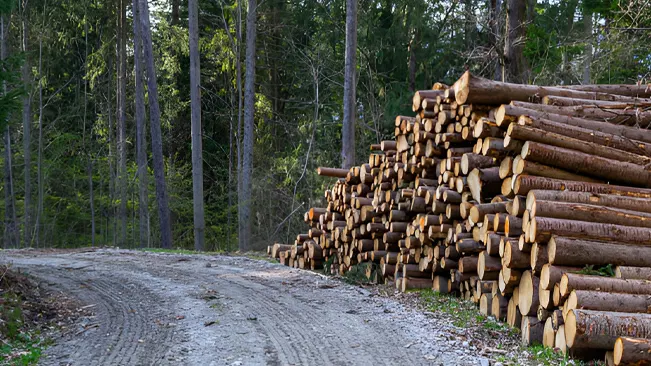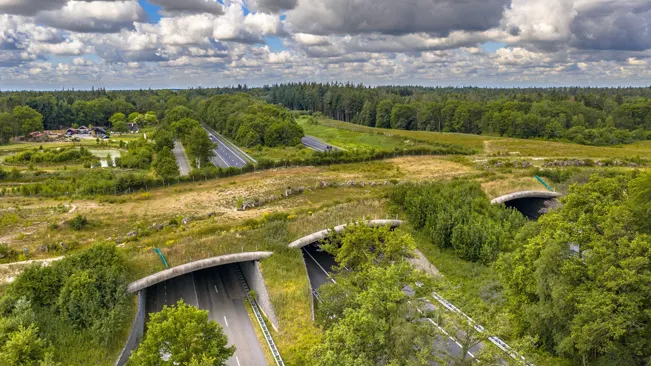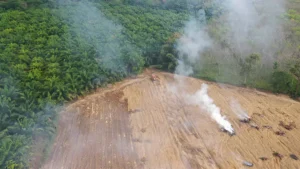Forest Ecosystems: Human Role & Conservation Balance
- August 6, 2024
- 0 comment
Forest Ecosystems are among the most vital ecosystems on our planet, providing essential services that support life, including clean air and water, climate regulation, and biodiversity. However, the relationship between forests and humans is complex and multifaceted. As we strive to conserve forest biodiversity, it is crucial to recognize that people are not just external agents impacting these ecosystems they are integral components of the forest landscape.
Understanding Forest Ecosystems

Definition and Importance
Forests are defined as large areas dominated by trees and other vegetation that play a critical role in the Earth’s ecological balance. They cover approximately 31% of the planet’s land area and are home to more than 80% of terrestrial biodiversity. Forests are essential for various reasons.
- Biodiversity Hotspots
Forests are rich in biodiversity, hosting millions of species of plants, animals, fungi, and microorganisms. This biodiversity is crucial for ecosystem resilience and stability. - Climate Regulation
Forests act as carbon sinks, absorbing carbon dioxide from the atmosphere and helping to mitigate climate change. They also influence local and global weather patterns. - Water Cycle Maintenance
Forests play a key role in the hydrological cycle, facilitating groundwater recharge and maintaining water quality in rivers and lakes. - Cultural and Economic Value
Many indigenous and local communities depend on forests for their livelihoods, culture, and identity. Forests provide timber, fuelwood, non-timber forest products (NTFPs), and recreational opportunities.
Humans and Forests
Co-evolution of Humans and Forests
The interaction between humans and forests is not a recent phenomenon; it dates back thousands of years. Archaeological evidence suggests that early human societies actively managed forests through practices such as selective logging, controlled burning, and the cultivation of certain plants. These practices not only provided food and resources but also shaped the structure and composition of forest ecosystems.
For instance, in the Amazon Basin, indigenous peoples have cultivated diverse agroforestry systems that integrate crops with native tree species, enhancing biodiversity while meeting their subsistence needs. Similarly, in the temperate forests of Europe, historical land-use practices, including coppicing and pollarding, have created unique forest habitats that support diverse flora and fauna.
Modern Impacts of Human Activities on Forest Ecosystems

Deforestation and Fragmentation
In recent decades, the rate of deforestation has accelerated, driven by agricultural expansion, urbanization, logging, and infrastructure development. According to the Food and Agriculture Organization (FAO), approximately 10 million hectares of forest are lost each year, leading to significant ecological consequences
- Loss of Biodiversity
Deforestation and habitat fragmentation result in the loss of species that depend on specific forest conditions. Many species face extinction due to habitat loss, while others may thrive in altered environments, leading to shifts in community composition. - Altered Ecosystem Functions
The removal of trees disrupts essential ecosystem functions such as nutrient cycling, water regulation, and soil stability. This can lead to increased soil erosion, reduced water quality, and altered microclimates. - Climate Change
Deforestation contributes to climate change by releasing stored carbon dioxide back into the atmosphere. This not only exacerbates global warming but also affects local weather patterns and increases the vulnerability of ecosystems to climate-related disturbances.
Unsustainable Logging Practices
Logging, even when conducted under sustainable management practices, can have detrimental effects on forest ecosystems. Selective logging often leads to changes in forest structure, with the removal of certain species impacting the entire ecosystem.
- Species Composition Changes
The removal of key tree species can alter habitat availability for various organisms, including birds, mammals, and insects. This can lead to declines in populations of species that rely on specific habitats. - Soil Compaction and Erosion
Logging activities can compact soil and increase erosion, leading to sedimentation in nearby water bodies. This can degrade water quality and disrupt aquatic ecosystems.
Invasive Species and Habitat Degradation
Human activities have also facilitated the introduction of invasive species, which can outcompete native flora and fauna, leading to further biodiversity loss. Invasive species often thrive in disturbed environments, making degraded forest areas particularly vulnerable.
The Need for Sustainable Forest Management

Balancing Conservation and Human Needs
To address the challenges posed by human activities, it is essential to adopt sustainable forest management practices that balance conservation objectives with the needs of local communities. This requires a holistic approach that recognizes the interconnectedness of social, economic, and ecological factors.
Key Principles of Sustainable Forest Management
- Integrative Planning
Sustainable forest management should involve comprehensive planning that considers ecological, social, and economic dimensions. This includes assessing the impacts of various land-use practices and engaging stakeholders in decision-making processes. - Community Involvement
Involving local communities in forest management can enhance conservation outcomes. Indigenous and local knowledge can provide valuable insights into sustainable practices and help build stewardship for forest resources. - Adaptive Management
Forest ecosystems are dynamic and constantly changing. Adaptive management involves monitoring and adjusting management practices based on new information and changing conditions, ensuring that conservation efforts remain effective. - Ecosystem Services Valuation
Recognizing the value of ecosystem services provided by forests can help justify conservation efforts. This includes quantifying benefits such as carbon sequestration, water purification, and recreational opportunities, which can inform policy and funding decisions.
Strategies for Conserving Forest Biodiversity

Protecting Large Areas
One of the most effective strategies for conserving forest biodiversity is to protect large, contiguous areas of forest rather than smaller, isolated patches. Large protected areas can support viable populations of species and maintain ecological processes. For example, the establishment of national parks and reserves in regions like the Amazon rainforest has been crucial for preserving biodiversity.
Rebuilding Connectivity
Habitat fragmentation is a significant threat to forest ecosystems. Rebuilding connectivity among fragmented habitats is essential for allowing species to move freely, find mates, and access resources. Strategies to enhance connectivity include
- Creating Wildlife Corridors
Establishing corridors that link fragmented habitats can facilitate animal movement and gene flow. These corridors can be designed to mimic natural landscapes and provide safe passage for wildlife. - Restoring Degraded Areas
Reforestation and afforestation efforts can help restore degraded areas, enhancing connectivity and providing additional habitat for wildlife.
Protecting Forest Edges
Forest edges are often more vulnerable to disturbances such as invasive species, fire, and climate impacts. Protecting forest edges involves
- Buffer Zones
Establishing buffer zones of natural vegetation around forest edges can help mitigate the impacts of adjacent land uses, such as agriculture and urban development. - Management Practices
Implementing management practices that reduce edge effects, such as controlled burns and invasive species control, can help maintain the integrity of forest ecosystems.
Minimizing Harsh Adjacent Land Uses
The impacts of adjacent land uses can significantly affect forest health. Strategies to minimize these impacts include
- Promoting Sustainable Agriculture
Encouraging sustainable agricultural practices, such as agroforestry and organic farming, can reduce chemical runoff and habitat degradation while supporting local livelihoods. - Controlling Invasive Species
Implementing measures to control the spread of invasive species in adjacent areas can prevent their encroachment into forest ecosystems.
The Role of Local Communities in Forest Management

Community-Based Forest Management
Community-based forest management (CBFM) has emerged as a successful approach to balancing conservation and human needs. CBFM recognizes the rights and knowledge of local communities and empowers them to manage forest resources sustainably. Successful examples include.
- Nepal’s Community Forestry Program
This program has enabled local communities to manage forest resources, resulting in improved biodiversity, increased forest cover, and enhanced livelihoods. - Brazil’s Extractive Reserves
These reserves allow local communities to sustainably harvest forest products while conserving biodiversity. They serve as models for integrating conservation with economic development.
Challenges and Opportunities
While community involvement in forest management offers numerous benefits, challenges remain. These include
- Conflicting Interests
Balancing the interests of various stakeholders, including government agencies, private companies, and local communities, can be challenging. Effective negotiation and conflict resolution strategies are essential. - Capacity Building
Building the capacity of local communities to manage forests sustainably requires investment in education, training, and resources.
Conclusion
The relationship between humans and forest ecosystems is intricate and deeply rooted in history. As we face unprecedented challenges related to deforestation, climate change, and biodiversity loss, it is essential to recognize that people are not merely external threats to forests but integral components of these ecosystems. Sustainable forest management that balances conservation objectives with the needs of local communities is crucial for preserving the ecological integrity of forests.
Frequently Asked Questions (FAQs)
- How have humans historically interacted with forest ecosystems?
Humans have interacted with forests for thousands of years, engaging in practices such as selective logging, agriculture, and fire management. Indigenous communities have historically managed forests to enhance biodiversity while meeting their subsistence needs. - What are the main drivers of deforestation and forest degradation today?
Major drivers include agricultural expansion, urbanization, logging, mining, and infrastructure development. These activities lead to habitat loss, fragmentation, and degradation of forest ecosystems. - How do unsustainable logging practices impact forest biodiversity?
Unsustainable logging can lead to habitat destruction, altered species composition, and reduced biodiversity. It disrupts ecological processes and can result in the loss of species that rely on specific forest conditions. - What are the key principles of sustainable forest management?
Key principles include integrative planning, community involvement, adaptive management, and the valuation of ecosystem services. Sustainable forest management aims to balance ecological health with human needs. - Why is protecting large, contiguous areas of forest important for biodiversity conservation?
Large protected areas support viable populations of species, maintain ecological processes, and provide habitats that are less susceptible to edge effects and human disturbances. - How can connectivity be rebuilt in fragmented forest landscapes?
Connectivity can be enhanced by creating wildlife corridors, restoring degraded areas, and implementing landscape-level planning that integrates habitat needs for various species. - What strategies can be used to protect vulnerable forest edges?
Strategies include establishing buffer zones, managing edge effects through controlled burns, and preventing invasive species encroachment to maintain the integrity of forest ecosystems. - How can adjacent land uses be managed to minimize negative impacts on forests?
Sustainable agricultural practices, controlled land development, and minimizing chemical use in adjacent areas can help reduce the negative impacts of land use on forest ecosystems. - What are the benefits and challenges of community-based forest management?
Benefits include improved forest health, enhanced biodiversity, and increased local stewardship. Challenges may involve balancing diverse stakeholder interests and ensuring equitable resource distribution. - What is the role of local and indigenous knowledge in sustainable forest stewardship?
Local and indigenous knowledge is crucial for understanding ecosystem dynamics and developing effective management practices. It helps integrate traditional ecological knowledge with modern conservation strategies.

Evan Bennett
Forestry AuthorEvan Bennett brings over a decade of expertise in forestry wildlife management to the forefront, specializing in habitat conservation, biodiversity, and human-wildlife interaction. Evan's work ensures harmonious coexistence between wildlife and human communities through effective and sustainable practices. Continuously engaging in research and workshops, Evan stays at the cutting edge of wildlife management advancements. As a trusted advisor and contributor to leading environmental journals, Evan is dedicated to preserving the natural world for future generations.






Leave your comment